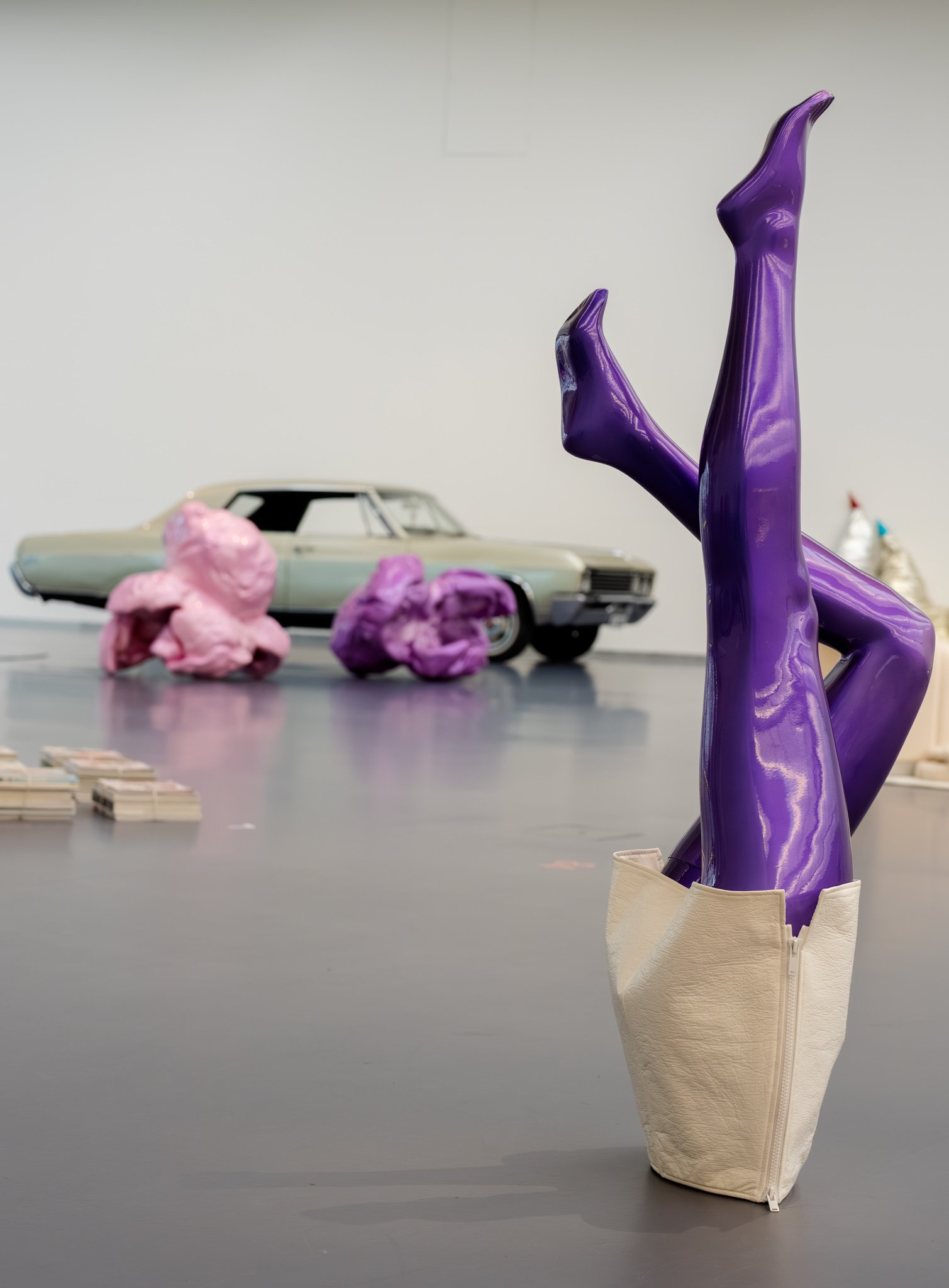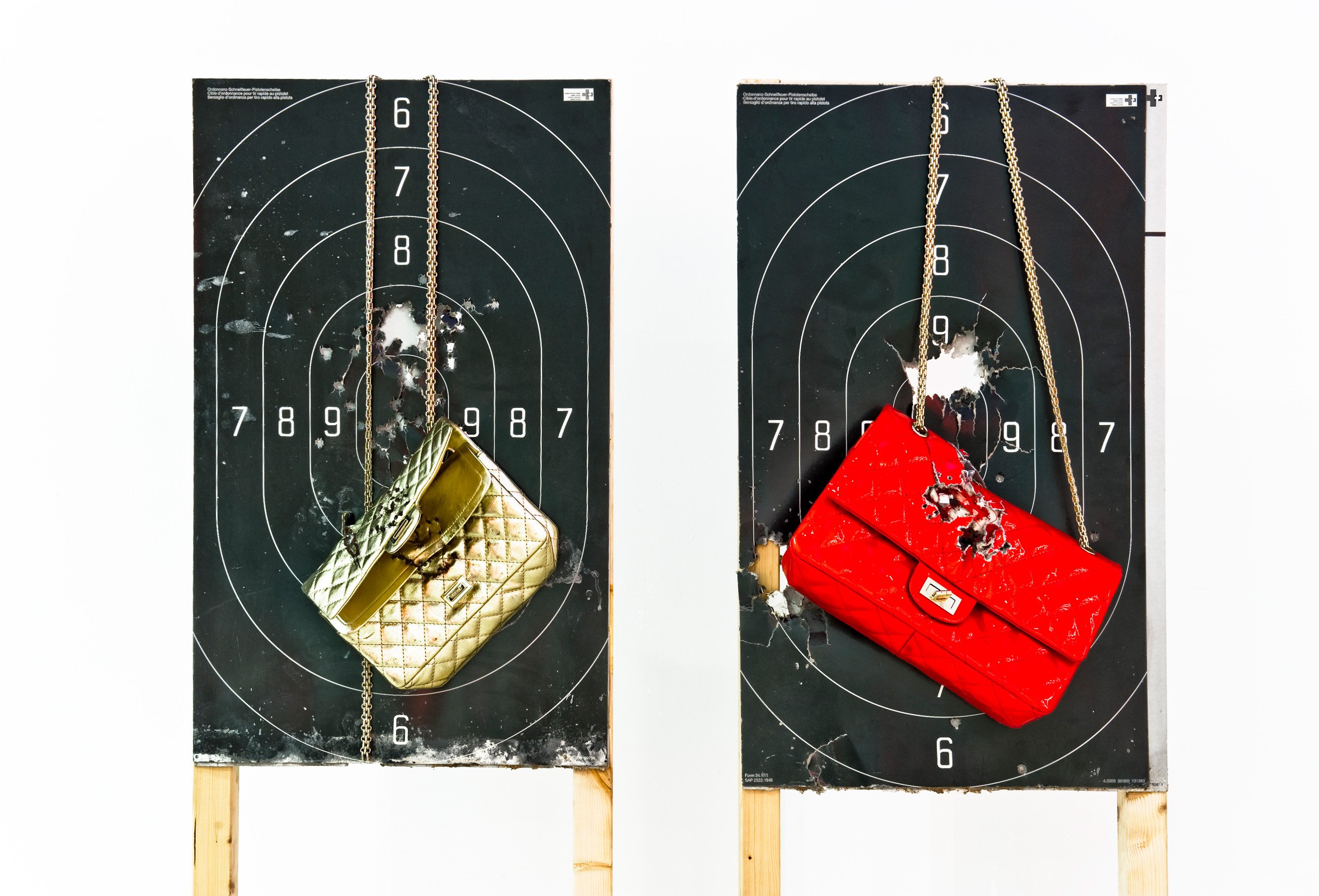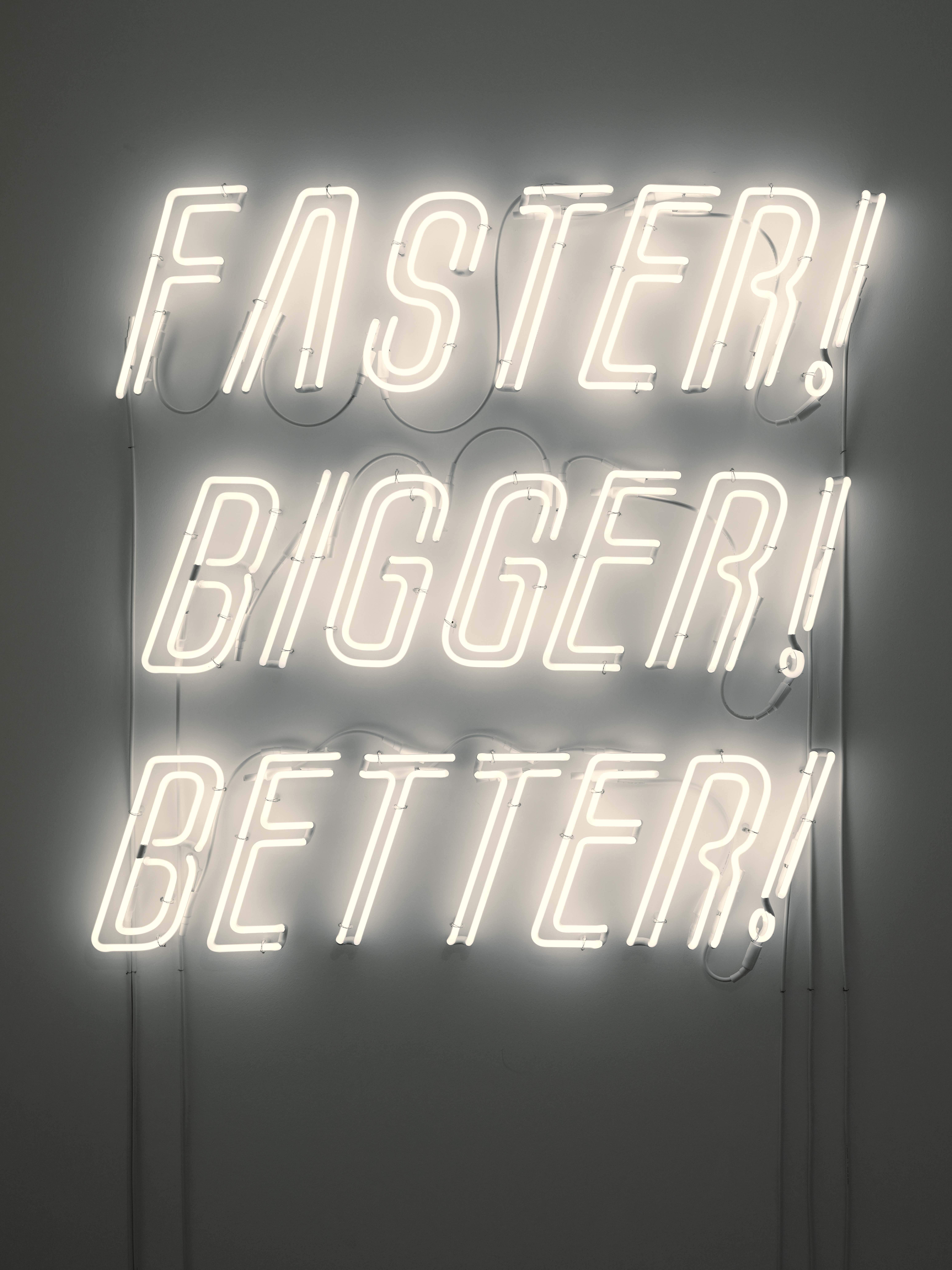In the 1990s, Sylvie Fleury found fame with her ironic presentations of glamour, fashion, and lifestyle. She still follows the latest trends, loyally reads all the relevant fashion magazines, and never misses the seasonal couture shows in Paris. A fashion victim herself, in her work she responds to the overwhelming influence of the fashion industry by elevating elements from that world to artworks. In the exhibition visitors can imagine themselves to be in a concept store filled with designer goods, Vogue covers, and neon installations with slogans like 'Champagne & Limousines'. By placing luxury goods, accompanied by their seductive sales strategies, in a different context, Fleury is making us aware of the similarities between consumerism and the fashion world.
Objectification of women
Using lively colours, striking materials, and surprising contradictions, Fleury highlights the gender stereotypes and unrealistic beauty ideals that are prevalent in our society. She deconstructs the expectations that we impose on women with regard to their appearance and behaviour, and everything that entails. The exhibition includes vintage aerobics videos by Jane Fonda and a Gucci yoga mat. Make-up plays an important role in her work as well: for instance, Fleury creates larger-than-life-sized eye shadow palettes that, without a matching brush or visible logo, somewhat resemble abstract paintings.
Femininity as a weapon
Destruction is a recurring phenomenon in Fleury’s work: she consciously wrecks various objects from the fashion world and pop culture in order to free them from societal constructs or gender clichés. “Sometimes all you need to do is scratch the surface, other times you have to blow it to pieces,” says the self-appointed punk feminist in disguise. She literally demonstrates this in a video installation in which a group of women, including the artist, opens fire on 22 iconic Chanel bags. In addition, Fleury transforms products that are stereotypically thought of as feminine into weapons. Examples of this are a bronze cast of a pistol-shaped hairdryer, or a pair of Balenciaga stiletto heels covered in spikes.
Faster, Bigger, Better
In the exhibition Fleury sheds light on the macho culture dominating the world of car racing. The car – as a male status symbol – plays an important role in Fleury's oeuvre. She uses classic American automobiles to crush bottles of foundations and pots of blusher, or covers car wrecks in neon pink Givenchy nail polish. By showing neon signs with the text ‘Faster, Bigger, Better’ and showing videos of loudly accelerating cars, she portrays this masculine sport in a sensual and erotic way.
Walking on Carl Andre
Fleury also satirizes the largely male-dominated art history. Referring to art movements like modernism, minimalism, conceptualism, and pop art, she takes visible pleasure in competing with key figures like Piet Mondrian, Donald Judd, Carl Andre, and Daniel Buren. Fleury links their pretentious works to banal objects, or supplements them with glamorous, soft, and organic elements. She executes Mondrian’s famous geometric shapes in fake fur, or gets a variety of women wearing stiletto heels to provocatively parade across Carl Andre’s famous floor works.
First Spaceship on Venus
Fleury furthermore challenges the idea that space travel is also a male-dominated field. Sometimes proudly erect and made of steel, while at other times limp and slumped in the corner, her series First Spaceship on Venus highlights the phallic symbolism of rockets. She subsequently turns these into more ‘feminine’ objects by executing them in soft materials and lipstick colours, while giving them names like ‘Clitonia’. Feminine versus masculine, high versus popular culture, producer versus consumer, and fashion industry versus art world: the Kunsthal will allow visitors to step into the high-contrast universe of Sylvie Fleury.
Press




Tentoonstellingspartners

Pro Helvetia
www.prohelvetia.ch/en


Stichting Bevordering van Volkskracht
Volkskracht supports everyone with a good plan for Rotterdam. In the almost 90 years of its existence Volkskracht made a lot of things (partly) possible. Heavy metal concerts, circus festivals, but also vegetable gardens for children and the renovation of a large theater. Always in cooperation with the people of Rotterdam. Rotterdam is made with Volkskracht.


Stichting Retourschip
Stichting Retourschip


Stichting Elise Mathilde Fonds
www.elisemathilde.nl
